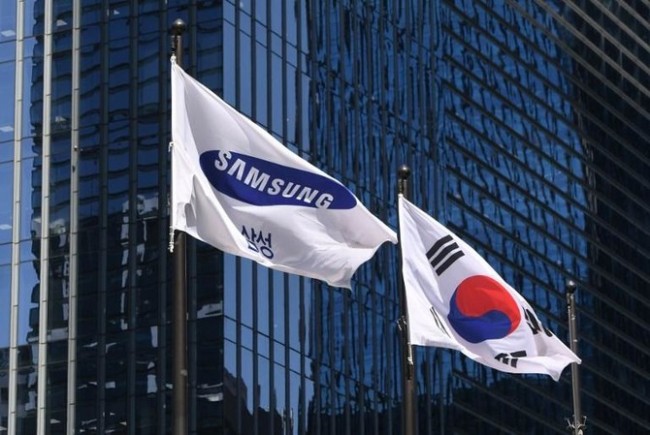Samsung Electronics achieved its largest quarterly operating profit in the third quarter this year, exceeding 17 trillion won ($14.9 billion) for the first time, owing to consistent robust sales of semiconductors, according to its earnings announcement Wednesday.
The South Korean tech giant posted 65.46 trillion won in consolidated revenue in the third quarter, up 5.5 percent from a year earlier, and 17.57 trillion won in operating profit, up 20.9 percent.
 |
(AFP) |
The third-quarter operating profit reached a new quarterly high for the company driven mainly by continued strength in the memory business, Samsung said. The total revenue increased both on-year and on-quarter on the back of strong sales of memory products and organic light-emitting diode panels.
The semiconductor division recorded higher earnings amid strong seasonal demand, particularly for server and mobile memory.
The division, including the device solutions and display businesses, obtained a total of 13.65 trillion won in operating profit, accounting for 77.7 percent of all operating profit.
The lucrative chipmaker’s quarterly operating profit grew from 9.96 trillion won a year earlier and 11.61 trillion won a quarter earlier.
“While NAND and DRAM demand remained high, the memory business improved its earnings by concentrating on sales of premium products, improving yields and ramping up production of high-density chips at its Pyeongtaek plant,” the company said.
For the display panel business, despite unfavorable supply-demand conditions in the liquid crystal display market, earnings improved on-year due to higher sales of flexible organic light-emitting diode panels to major customers.
The panel business’ quarterly profit stood at 1.1 trillion won for the first time this year.
However, the IT and mobile communications division reported a drop in earnings due to slow sales of its flagship smartphones.
The division posted 24.91 trillion won in consolidated revenue and 2.22 trillion won in operating profit for the quarter. The mobile division achieved 3.77 trillion won in the first quarter and 2.22 trillion won in the second quarter.
“The smartphone shipments remained flat due to a decrease in sales of mid- to low-end products,” the company said. “Profit was also down due to increased promotional costs and a negative currency impact.”
For the consumer electronics division, earnings slightly improved from 0.51 trillion won in the second quarter to 0.56 trillion won, thanks to increased sales of premium TV products, such as QLED and ultra-large screen TVs of 75-inches and above.
As opposed to the largest-ever quarterly earnings, Samsung is foreseeing some declines in major figures for the upcoming fourth quarter, citing the weak seasonality in the semiconductor market.
“Due to the weak seasonality in the fourth quarter and first quarter of next year, the market conditions could slow (including DRAM price falls), but from the second quarter, demand for new CPU platforms and high-value-added memory chips would exceed supply,” a Samsung executive said during a conference call.
Samsung is on track to start mass production of the sixth-generation V-NAND flash chips with 120 layers up from the current fifth-generation’s 92 layers, in the second half of 2019, the executive added.
Smartphone and consumer electronics sales are forecast to rise, benefiting from the year-end peak season.
“The fourth quarter is a high season for smartphones, but related marketing costs are expected to cause the quarterly profit to decline from (the third quarter),” an official said. “But the 5G market would provide many new opportunities for the stalled smartphone market that is expected (to contribute to) new platforms for gaming and high definition video content.”
By Song Su-hyun (
song@heraldcorp.com)







![[Today’s K-pop] Blackpink’s Jennie, Lisa invited to Coachella as solo acts](http://res.heraldm.com/phpwas/restmb_idxmake.php?idx=644&simg=/content/image/2024/11/21/20241121050099_0.jpg)
